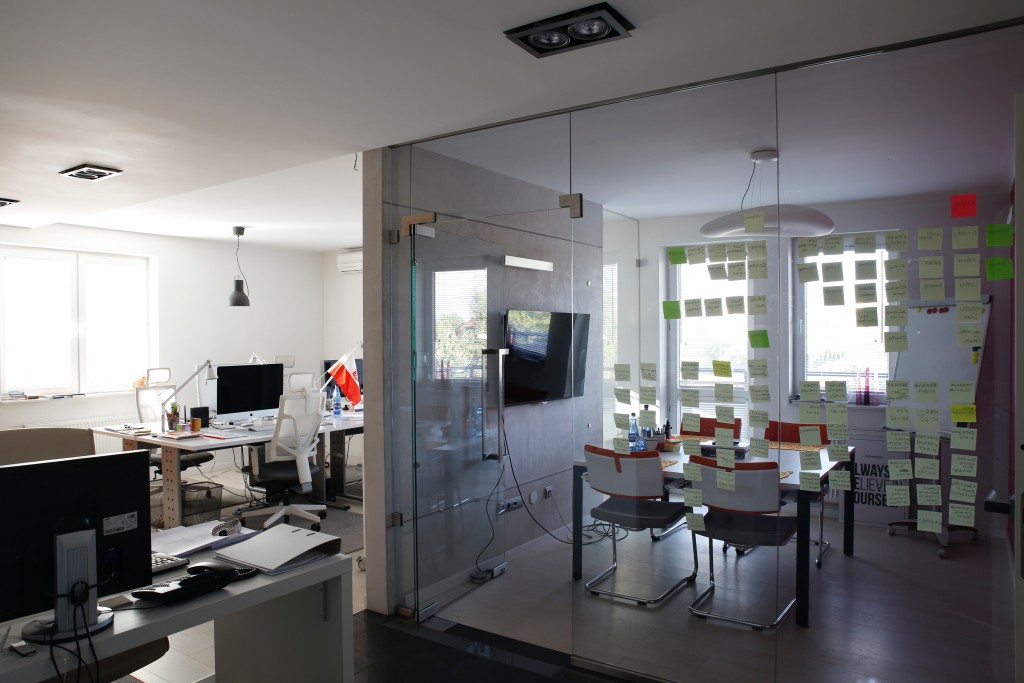By Kevin Eichenberger; with contributions from Datuk Paul Khong of Savills Malaysia
Are co-living and co-working enterprises new property segments or just more short-lived fads?
With rising property prices in urban centres around the world, fewer individuals and organisations have access to the convenience and prestige that apparently come with living and working in the city.
Co-living and co-working enterprises essentially bridge the divide between the lofty aspirations of recent generations and the reality of high demand versus low supply.

Photo by Anastasia Dulgier on Unsplash.
Around the world, co-sharing makes prohibitively expensive properties more accessible to individuals by consolidating wide swathes of urban space and providing parcelled units at short-term rental rates. In addition to lowering the costs for individuals, these parcelled spaces are fully decorated, managed, ready-to-use, and coupled with access to intentional communities of like-minded individuals.

Photo by Helena Lopes on Unsplash.
By filling the gap between the expectations of a dormitory and the high costs associated with a traditional tenancy, co-sharing enables nomadic professionals, roving consultants, innovators, and fledgeling companies to have prestigious addresses in the hearts of cities – often with flexible leases stripped of the concerns normally borne by sole tenants.
Despite their apparent novelty, co-sharing has existed even before the world’s first cities were formed – albeit in only vaguely familiar forms.
Today’s slick co-living spaces are apparently derived from older communal living concepts, the result of a natural progression from primitive longhouses to university dormitories such as the London-based Isokon – which brought together the intellectual discourse of academics, the Bauhaus school of art, and a commercial furniture enterprise of the same name.

The world's first formal co-living space, the Isokon on Lawn Road (London). Image by Wikipedia.org
Co-working may be a concept that is even older: any endeavour that required labour – resource gathering, hunting, farming, artisanal works, construction – and later on, manufacturing, logistics, and transportation – all relied on seasonal migrations of workers and roving craftspersons with the necessary skills to serve enterprises formed from concentrations of wealth or authority.

Photo by Ales Krivec on Unsplash.
In Malaysia, co-working stemmed from Servcorp’s virtual offices, capitalising on the Internet to provide start-ups with the functional infrastructure of a full-fledged company and tentative connections to desirable addresses.
Servcorp later pioneered serviced offices, which expanded on the remote services of virtual offices, to provide companies with a convenient means of doing business without having to own, renovate, or maintain a commercial property of their own.

Photo by dylan nolte on Unsplash.
The serviced office concept then evolved with rebranding, by the likes of Regus, which introduced a communal element of collaboration to cater to global professionals of the digital age and to meet demands for offices and workspaces that could be flexibly utilised.
Why are co-living and co-working spaces popular?
According to Datuk Paul Khong of Savills Malaysia, collaborative spaces appeal to younger professionals due to three distinguished factors, namely: cost, convenience, and community.
Cost
Traditional leases require tenants to bear the costs of letting fees and fitting out space, in addition to paying for utilities and security deposits of between one to three months’ rental.

Photo by Toa Heftiba on Unsplash.
Co-working enterprises remove the bulk of these cost concerns for tenants (or “members”) and provide parcelled units of “hot desks” ranging from RM400 to RM1,000 a month, dedicated desks, and small office suites for between RM2,500 to RM4,000, depending on the location, tenancy length, and the specific terms set by various operators. Even daily rates are available, with some operators charging below RM40 per desk a day.
These pricing ranges make co-working spaces appealing alternatives for individuals and organisations who require office spaces for any period up to a year.
Collaborative spaces also tend to increase the utilisation of assets whilst reducing inefficiencies wherever possible – the largest co-working entities around the world rely on computer-aided design to determine the most efficient utilisation of space and fixtures to ostensibly lower the operating costs of each workspace.

Photo by MEDIA PROFILE on Unsplash.
While collaborative spaces may look to be more expensive than traditional leasing options, a fully fitted and furnished option enables occupiers to move in immediately, reducing additional costs and time spent in getting a space ready for use.
Convenience
Collaborative spaces typically require shorter tenancy periods, with some going beyond single-month commitments by adopting the ‘pay-as-you-go’ model.

Photo by Al ghazali on Unsplash.
With the minimum tenancy period of at least a year, traditional leases require greater commitment and provide less flexibility. On the other hand, co-living enterprises tend to be less flexible than their co-working counterparts, but they still fill the wide gap between traditional leases and short-term rentals.
The management of properties, traditionally the responsibility of the occupiers, is instead handled by co-living and co-working enterprises as the landlords.
The hassles which stem from a faulty lightbulb, a leaking pipe, or a defunct printer, are of little concern for co-sharing members, as the responsibilities of maintenance are absolved by the operators. With the management of a property taken care of, occupiers are apparently willing to pay a premium.
Co-living and co-working space operators have been taking up large spaces with long leases, and property owners are enthusiastic to enter such arrangements.

Photo by Sean Pollock on Unsplash.
A long-term lease provides a stable stream of income for property owners over a prolonged period, and with the norm being wide spaces bundled into a single lease, there are fewer tenants for property owners to contend with.
WeWork, for example, took up about five floors’ worth of space, exceeding 100,000 square feet, in Equatorial Plaza – an expensive piece of real estate that might have otherwise been difficult to completely monetise.
Community
The coup de grâce that current shared space providers pride themselves in most would be their globe-spanning networks of members.

Photo by Johnson Wang on Unsplash.
Co-working enterprises add value to their spaces by providing the means for networking and collaboration – which fits neatly into the operational needs of freelancers and startups. Most co-working operators brand their spaces as vibrant environments which enable their members to “meet and greet” others in the same industry, participate in community-building initiatives, and spur business growth.
Many consultancies and advisory services have started setting up their footholds in co-working spaces in order to plug into ready-made networks of clients, to stay updated on developments in their industries, and to partake in the exchange of innovative ideas.
According to Datuk Paul Khong, even banks and government agencies are getting in on the act, “On 23rd April 2019, the Hong Leong Group and the Malaysian Digital Economy Corporation’s (MDEC), through Tower REIT (the Tower Real Estate Investment Trust), announced plans to revitalise Menara HLA with the HLX Hub, Malaysia’s first innovation exchange."
“The HLX Hub represents an initiative to spur growth in the Malaysian tech start-up ecosystem by building a thriving entrepreneurial network. The development of this blend of both co-living and co-working spaces as part of the HLX hub is expected to be well-received when ready at the end of 2020.”
Are shared spaces commercially viable?
Collaborative spaces appeal to a significant demographic attracted to flexibility and convenience – but the risks are much higher compared to the lease terms traditionally relied upon by landlords.
Collaborative spaces provide a necessary service in a climate where city centres are getting prohibitively expensive and technological innovations are no longer necessarily solely the purview of well-funded entities – but these enterprises are capital intensive and are not highly scalable.
Designed for the most efficient utilisation of space, and combining quality aesthetics with appealing addresses, collaborative spaces cater to tenants who are willing to pay a premium to enjoy an urban lifestyle.
However, a location may fade in popularity in less time than a lease may be signed for – and the memberships of collaborative spaces, by virtue of flexible leases, may dwindle after the initial surge of excitement following the completion of a new property subsides.
New locations require lengthy negotiations, significant investment, and with long-term leases being the norm, new collaborative spaces may not generate the necessary profits to finance rapid expansion and ensure a visible presence in an increasingly saturated market.

Photo by Vladimir Proskurovskiy on Unsplash.
Despite the possible pitfalls, collaborative spaces are apparently here to stay and likely to grow much larger. They nurture their members by providing the necessary space and opportunities to develop innovative ideas and grow their enterprises, which forms a significant part of the aspirations of younger professionals who opt to live their lives with a degree of freedom not typically pursued by previous generations.
About the contributor
Datuk Paul Khong is the managing director of Savills (Malaysia) Sdn Bhd.
Savills is a global real estate services provider listed on the London Stock Exchange with more than 600 offices and associates in over 60 countries.
Disclaimer
All data and information provided on this site are for informational purposes only. StarProperty makes no representations as to the accuracy, correctness, completeness, currentness, suitability, or validity of any information on this site and will not be liable for any errors, omissions, or delays in this information or any losses, injuries, or damages arising from its display or use. The information is provided on an as-is basis. Users are encouraged to seek professional advice before relying on any data and/or information provided on this site.
Stay ahead of the crowd and enjoy fresh insights on real estate, property development, and lifestyle trends when you subscribe to our newsletter and follow us on social media.

















































